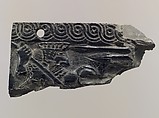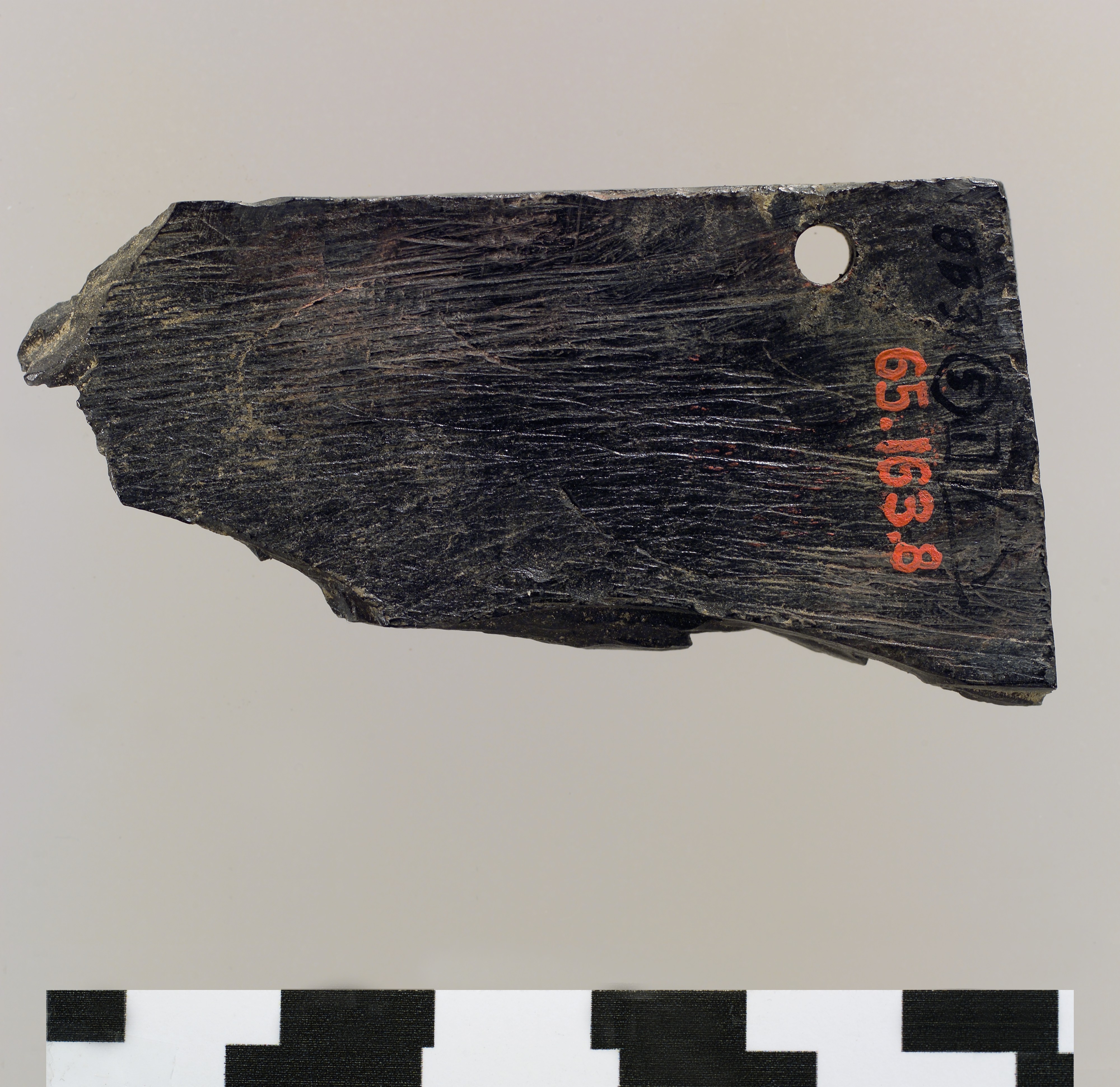Furniture plaque carved in relief with warrior
Not on view
Excavations at Hasanlu in Iran yielded a large number of carved ivory fragments, many in a distinctive style found only at this site, which probably decorated wooden furniture or were used as small precious objects such as boxes. The citadel at Hasanlu was attacked and destroyed around 800 B.C., most likely by military forces of the powerful state of Urartu, centered in present-day Armenia, eastern Turkey, and northwestern Iran. In the fire that destroyed the citadel, many objects were crushed and shattered. The blackened appearance of most of the Hasanlu ivories is due to their exposure to high temperatures at the time of the citadel’s destruction.
This fragment depicts a battle scene, with the upper body of a warrior at left holding a shield in his left hand and a spear aimed downward in his right. From the broken right edge of the fragment, two spears are pointed at the warrior’s head. His hair and beard are marked with a pattern of incised parallel lines, and his features are indistinct except for a large eye, shown in front view. His helmet has an earflap, marked with incised spots, and above is a flat projection decorated with triangular shapes, perhaps indicating a row of feathers. He wears a garment with scalloped borders visible at the edge of the sleeves and at the waist. The top and left edge of the plaque are unbroken, and a dowel hole pierces the guilloche border along the top edge. The plaque was probably attached to a wooden frame by means of dowels, to form a piece of furniture. A fragment showing a spear tip and the feet of two warriors, also in the Metropolitan Museum’s collection (65.123.18), may be part of the same plaque, or a similar plaque with the same type of decoration.
Due to rights restrictions, this image cannot be enlarged, viewed at full screen, or downloaded.
This artwork is meant to be viewed from right to left. Scroll left to view more.



